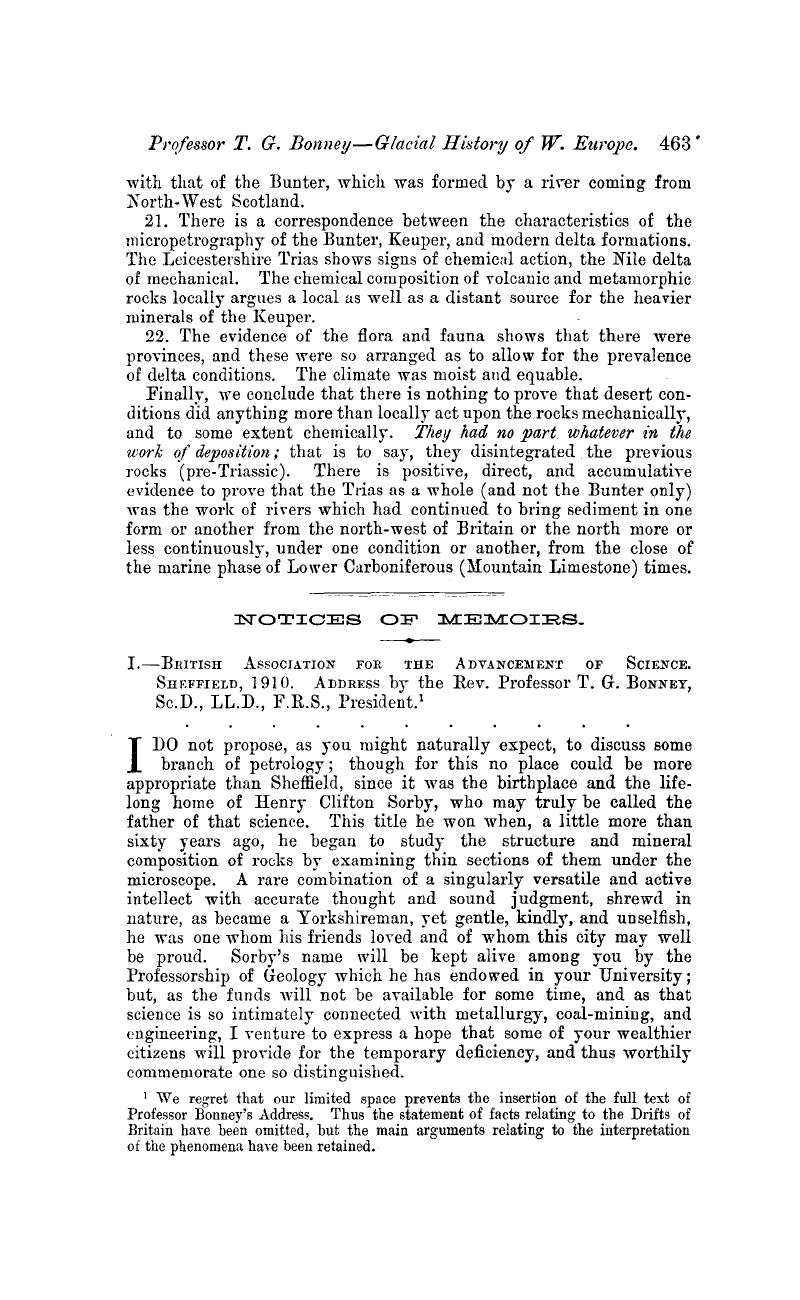Article contents
Notices of Memoirs
Published online by Cambridge University Press: 01 May 2009
Abstract

- Type
- Notices of Memoirs
- Information
- Copyright
- Copyright © Cambridge University Press 1910
References
page 463 note 1 We regret that our limited space prevents the insertion of the full text of Professor Bonney's Address. Thus the statement of facts relating to the Drifts of Britain have been omitted, but the main arguments relating to the interpretation of the phenomena have been retained.
page 464 note 1 The Natural History of Igneous Rocks, 1909.
page 464 note 2 In the remainder of this Address ‘temperature’ is to be understood as mean temperature. The Fahrenheit scale is used.
page 464 note 3 Johnson, W. D., Science, n.s., vol. ix, pp. 106, 112, 1899.Google Scholar
page 465 note 1 This does not appear to have occurred in the Alps.
page 465 note 2 Die Alpen in Eiszeitalter, 1909.
page 466 note 1 Bathymetrical Survey of the Scottish Freshwater Lochs, by SirMurray, J. and MrPullar, L., 1910.Google Scholar
page 466 note 2 I have doubts whether this is not too great.
page 467 note 1 I take the fall of temperature for a rise in altitude as 1˚ F. for 300 feet, or, when the differences in the latter are large, 3˚ per 1000 feet. These estimates will, I think, be sufficiently accurate. The figures given by Hann (see for a discussion of the question, Report of Brit. Assoc, 1909, p. 93) work out to 1˚F. for each 318 feet of ascent (up to about 10,000 feet).
page 468 note 1 On the exact number I have not had the opportunity of forming an opinion.
page 469 note 1 See footnote on p. 463, at the commencement of the President' Address.
page 473 note 1 Q.J.G.S., 1900.
page 474 note 1 Proc. Acad. Nat. Sc. Philadelphia, vol. vii, pt. iv, p. 341, 1855.Google Scholar
1 Mon. Pal. Soc., 1862, Appendix, p. 115, pl. i, fig. 21, etc.
1 Scudder, S. H., “Haxapod Insects of Great Britain”: Mem. Boston Nat. Hist. Soc., vol. iii, pp. 217–18, 1873–1894.Google Scholar
- 1
- Cited by


